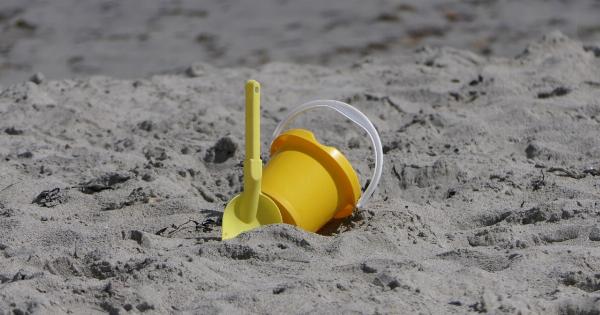Urinary issues can have a significant impact on an individual’s quality of life, particularly when they are present from birth. These issues can range from minor inconveniences to more severe conditions that require medical intervention.
Fortunately, there are various treatment options available to help manage and improve urinary issues in individuals who are born with them. In this article, we will explore some of the common urinary issues that can be present at birth and discuss the solutions that are available.
1. Urinary Tract Infections (UTIs)
Urinary tract infections are a common urinary issue that can affect individuals from birth. UTIs occur when bacteria enter the urinary system and multiply, leading to discomfort and inflammation.
In infants, UTIs can be challenging to diagnose as they may not exhibit typical symptoms. However, common signs include frequent urination, fever, irritability, and foul-smelling urine.
The treatment for UTIs in infants usually involves the use of antibiotics to combat the bacterial infection. It is crucial to consult a healthcare professional to obtain an accurate diagnosis and appropriate treatment for the child.
Additionally, practicing good hygiene, such as changing diapers frequently, can help prevent UTIs in infants.
2. Vesicoureteral Reflux (VUR)
Vesicoureteral reflux is a urinary issue that occurs when urine flows back from the bladder into the kidneys. This condition is more common in infants and young children and can increase the risk of urinary tract infections and kidney damage.
Treatment options for VUR vary based on the severity of the condition. In mild cases, regular monitoring and antibiotic prophylaxis may be sufficient. This involves taking low-dose antibiotics to prevent urinary tract infections.
In more severe cases, surgical intervention may be necessary to correct the reflux and prevent further complications.
3. Hydronephrosis
Hydronephrosis is a condition characterized by the swelling of the kidneys due to the backup of urine.
This can be caused by several factors, including blockages in the urinary tract, abnormal development of the ureters or bladder, or structural issues in the kidneys.
The treatment for hydronephrosis depends on the underlying cause and the severity of the condition. Mild cases may resolve on their own without intervention, while more severe cases may require surgical correction.
In some instances, a surgical procedure called a pyeloplasty may be performed to reconstruct the affected area and restore normal urine flow.
4. Neurogenic Bladder
Neurogenic bladder refers to a dysfunction of the bladder caused by a neurological condition or nerve damage. This condition can lead to bladder control problems, including urinary incontinence or difficulty emptying the bladder completely.
Treatment options for neurogenic bladder can vary depending on the cause and severity of the condition.
This may include medication to relax the bladder muscles, intermittent catheterization to empty the bladder, or surgery to address any structural abnormalities. In some cases, a combination of treatments may be necessary to effectively manage the symptoms associated with neurogenic bladder.
5. Prune Belly Syndrome
Prune belly syndrome is a rare disorder characterized by the absence or underdevelopment of the abdominal muscles, urinary tract abnormalities, and undescended testicles in males.
This condition can cause significant urinary complications, including urinary tract infections, urinary incontinence, and kidney damage.
Treatment for prune belly syndrome typically involves a multidisciplinary approach. This may include surgical intervention to correct any structural abnormalities, medication to manage urinary symptoms, and ongoing monitoring of kidney function.
In some cases, kidney transplantation may be necessary if severe kidney damage occurs.
6. Kidney Dysplasia
Kidney dysplasia is a condition in which the kidneys do not develop normally while in the womb. This can lead to structural abnormalities and impaired kidney function.
The severity of kidney dysplasia can vary, with some individuals experiencing mild symptoms while others may require more extensive treatment.
Treatment options for kidney dysplasia depend on factors such as the extent of kidney damage, the presence of urinary tract obstructions, and overall kidney function.
In cases where kidney function is severely compromised, a kidney transplant may be necessary. In less severe cases, medication and regular monitoring may be sufficient to manage the condition.
7. Posterior Urethral Valves (PUV)
Posterior urethral valves are abnormal folds of tissue in the urethra, the tube that carries urine from the bladder to the outside of the body.
This condition is more common in males and can obstruct the flow of urine, leading to urinary tract infections, kidney damage, and other complications.
Treatment for posterior urethral valves typically involves surgical intervention to remove or bypass the obstructing tissue. This can help restore normal urine flow and prevent further complications.
In some cases, additional procedures and ongoing monitoring may be necessary to ensure optimal urinary function.
8. Bladder Exstrophy
Bladder exstrophy is a rare congenital condition in which the bladder forms outside the body. This condition can lead to urinary incontinence, bladder infections, and other urinary issues.
It often requires surgical intervention to correct the bladder position and address any associated abnormalities.
Treatment for bladder exstrophy typically involves a series of surgical procedures performed during infancy and childhood. The initial surgery aims to reposition the bladder and close the abdominal wall.
Subsequent surgeries may be necessary to address any ongoing urinary issues, such as bladder reconstruction or urinary diversion procedures.
9. Urethral Strictures
Urethral strictures refer to the narrowing of the urethra, which can impede the flow of urine. While this condition is not usually present at birth, it can develop later in life due to trauma or infection.
However, in some rare cases, infants may be born with urethral strictures.
Treatment options for urethral strictures depend on the severity and location of the stricture. In mild cases, medication and catheterization may be sufficient to manage symptoms.
However, more severe strictures may require surgical intervention, such as urethral dilation or urethroplasty, to widen or reconstruct the narrowed area of the urethra.
10. Epispadias and Hypospadias
Epispadias and hypospadias are congenital conditions that affect the positioning of the urethral opening in males.
In hypospadias, the opening is on the underside of the penis rather than at the tip, while epispadias involves the opening being on the top side of the penis.
Treatment for both epispadias and hypospadias typically involves surgical correction to reposition the urethral opening and improve urinary function. The specific surgical technique used depends on the severity and location of the condition.
In some cases, multiple surgeries may be necessary to achieve the desired outcome.






























